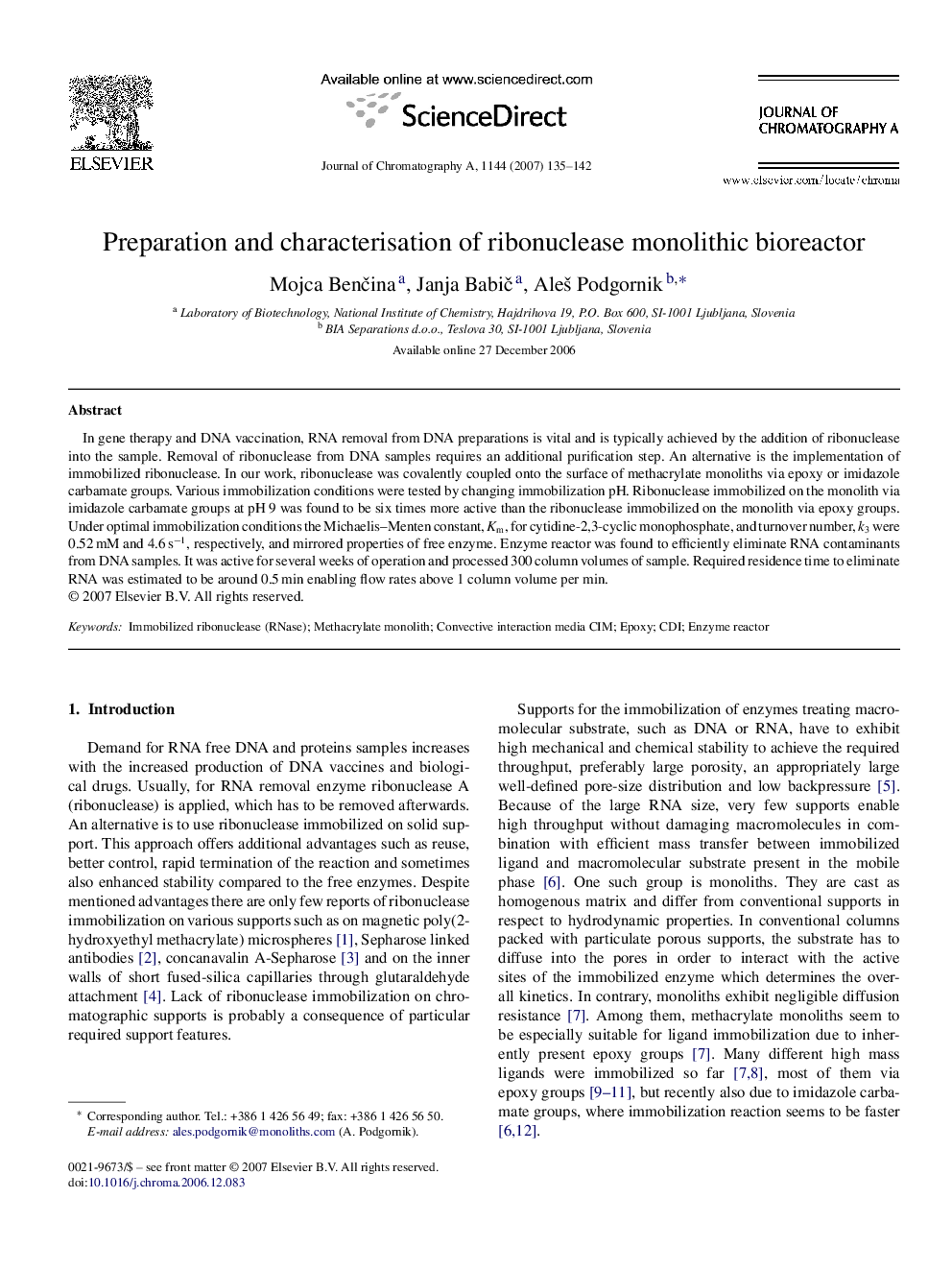| Article ID | Journal | Published Year | Pages | File Type |
|---|---|---|---|---|
| 1208009 | Journal of Chromatography A | 2007 | 8 Pages |
Abstract
In gene therapy and DNA vaccination, RNA removal from DNA preparations is vital and is typically achieved by the addition of ribonuclease into the sample. Removal of ribonuclease from DNA samples requires an additional purification step. An alternative is the implementation of immobilized ribonuclease. In our work, ribonuclease was covalently coupled onto the surface of methacrylate monoliths via epoxy or imidazole carbamate groups. Various immobilization conditions were tested by changing immobilization pH. Ribonuclease immobilized on the monolith via imidazole carbamate groups at pH 9 was found to be six times more active than the ribonuclease immobilized on the monolith via epoxy groups. Under optimal immobilization conditions the Michaelis-Menten constant, Km, for cytidine-2,3-cyclic monophosphate, and turnover number, k3 were 0.52Â mM and 4.6Â sâ1, respectively, and mirrored properties of free enzyme. Enzyme reactor was found to efficiently eliminate RNA contaminants from DNA samples. It was active for several weeks of operation and processed 300 column volumes of sample. Required residence time to eliminate RNA was estimated to be around 0.5Â min enabling flow rates above 1 column volume per min.
Related Topics
Physical Sciences and Engineering
Chemistry
Analytical Chemistry
Authors
Mojca BenÄina, Janja BabiÄ, AleÅ¡ Podgornik,
